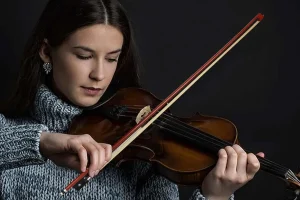The violin is a majestic and versatile instrument that has captured the hearts and ears of music enthusiasts for centuries. Whether you aspire to become a professional violinist or simply want to explore the beauty of this instrument as a hobby, learning to play the violin can be a fulfilling and rewarding experience. With its unique sound and expressive range, the violin has the power to evoke emotions and create breathtaking melodies.

However, learning how to play the violin can be a challenging endeavor that requires dedication, patience, and proper guidance. Fortunately, there are various resources available today that can help beginners embark on their journey to learn this enchanting instrument. From one-on-one lessons with experienced violin instructors to online tutorials and instructional videos, aspiring violinists have access to a wealth of information and support to aid them in their learning process. In this article, we will delve into the art of learning the violin, exploring different techniques, practice routines, and tips that can assist beginners in mastering this complex yet captivating instrument.
Mastering the Basics: Proper Posture and Positioning
To set yourself up for success in learning the violin, it is crucial to start with a solid foundation in proper posture and positioning. A correct violin posture not only enhances your playing technique but also prevents physical strain and discomfort. One essential resource that can help beginners achieve the perfect violin posture is an article by LVL Music Academy titled “Tips to Get the Perfect Violin Posture.” This comprehensive guide offers insightful tips and step-by-step instructions on how to hold the violin, position your body, and use your bow effectively.
Click here for more details https://www.lvlmusicacademy.com/tips-get-perfect-violin-posture/.
The article emphasizes the importance of maintaining a relaxed yet upright posture, aligning your body with the instrument’s shape, and distributing the weight evenly between your feet. It also provides valuable insights on how to position your left hand on the fingerboard and maintain a curved and flexible wrist. By following these guidelines, beginners can establish proper habits from the start and avoid developing bad habits that can hinder their progress in the long run. Implementing these techniques will not only enhance your sound quality but also prevent potential injuries or strain that may arise from incorrect positioning.
Learning the violin is a journey that requires time, effort, and dedication. By mastering the basics of proper posture and positioning, beginners can lay a solid foundation for their learning process. With the help of resources like the article by LVL Music Academy, aspiring violinists can gain valuable insights and step-by-step instructions on how to achieve the perfect violin posture. By maintaining a relaxed yet upright posture and positioning their body and hands correctly, beginners can not only improve their technique and sound quality but also prevent physical strain and potential injuries. With the right guidance and practice, learning to play the violin can be a truly fulfilling and rewarding experience.

Leave a Reply